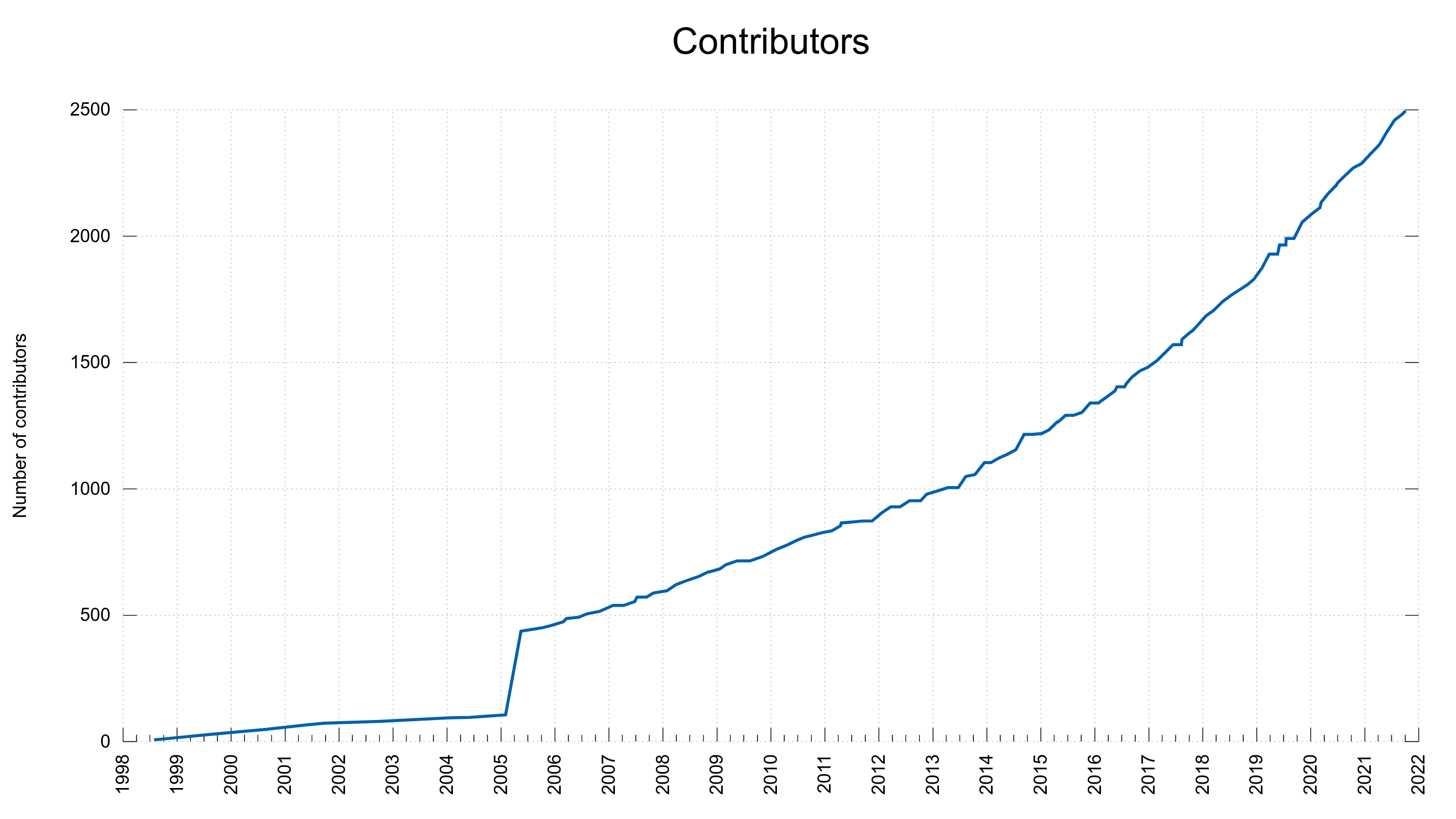In the curl project we keep track of and say thanks to every single contributor. That includes persons who report bugs or security problems, who run infrastructure for us, who assist in debugging or fixing problems as well as those who author code or edit the website. Those who have contributed to make curl to what it is.
Exactly today October 4th 2021, we reached 2,500 names in this list of contributors for the first time. 2,500 persons since the day curl was created back in March 1998. 2,500 contributors in 8599 days. This means that on average we’ve seen one new contributor helping out in the project every 3.44 days for almost twenty-four years. Not bad at all.
The 2,500th recorded contributor was Ryan Mast who brought pull-request 7809.
Thank you everyone who have helped us so far!
As can be seen on the graph below plotting the number of people in the THANKS file, the rate of newcomers have increased slowly over the years and we’ve added new names at the rate of about two hundred per year recently. There’s a chance that we will add the next 2,500 names to the list faster than twenty-four years. The latest 1,000 contributors have been added since the beginning of 2017, so in less than five years.
The thanks page on the website is usually synced at release time so it is always a little bit behind compared to what’s recorded in the curl git repository.
2005
The graph bump back in 2005: it was a one-time sweep-up where I went through our entire history and made sure that all names of people who were previously mentioned and who had helped were added correctly to the document. Since then, we’ve kept better track and make sure to add new names as we go along.
Scripting
We of course collect the names of the contributors primarily by the use of scripts, which is also the best way to avoid some slipping through.
- We always mention contributors and helpers in git commits, and they should be “marked” correctly for scripts to be able to extract them
- We keep a list of contributors per-release in the RELEASE-NOTES document. When we commit updates to RELEASE-NOTES, we use the fixed commit message ‘synced’ to have our tools use that as a marker.
- To get the updated list of contributors since the previous update of RELEASE-NOTES, we use the scripts/contributors.sh script.
- At release time, we update THANKS withe the scripts/contrithanks.sh script.



